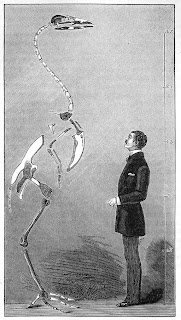 I recently had the
pleasure of presenting at the 2012 Massachusetts Environmental Education (EE)
Society conference at the college of the Holy Cross in Worcester, MA. The focus
of my talk titled, “The Digital Bird Watcher” was an overview of online
resources and ways teachers can connect students to bird watching through real science data. These days the
EE movement is largely focused on getting kids unplugged, outside, and undoing the effects of “ecophobia” (D. Sobel) and “nature deficit disorder” (R. Louv). I’m fully in
favor of this anti-microchip bend that EE advocates for, so I was conscious that
the word “digital” could be the cause of some rancor. To reassure the participants of my beliefs I prefaced my talk with the question,
“what do we mean by digital?” and
subsequently defined the role of digital technology as:
I recently had the
pleasure of presenting at the 2012 Massachusetts Environmental Education (EE)
Society conference at the college of the Holy Cross in Worcester, MA. The focus
of my talk titled, “The Digital Bird Watcher” was an overview of online
resources and ways teachers can connect students to bird watching through real science data. These days the
EE movement is largely focused on getting kids unplugged, outside, and undoing the effects of “ecophobia” (D. Sobel) and “nature deficit disorder” (R. Louv). I’m fully in
favor of this anti-microchip bend that EE advocates for, so I was conscious that
the word “digital” could be the cause of some rancor. To reassure the participants of my beliefs I prefaced my talk with the question,
“what do we mean by digital?” and
subsequently defined the role of digital technology as:- an aid, not a replacement for being outside in the field
- connecting learning around local and global issues of conservation and migration through accessible data
- personalizing the experience of bird watching through searchable maps, lists, and shared information
Further more I defined the
very goals of bird watching education as:
- Providing an
exciting and accessible entryway into the world of biodiversity
- Developing
topophilia, a personal even magical connection to place
- Educating
about local and global conservation issues through the story of migration
I
was mindful not to make my lecture an Itunes store full of bird watching apps
(though there are many good ones) nor was I going to showcase gimmicky, gadgets
like binoculars with built in cameras or GPS sound recorders. The purpose of my
talk was to share with teachers the incredible wealth of accessible data that
lives on the web, free of charge, up to date, multimodal, and pertinent. While
there are many good sites dedicated to K-12 curriculum ideas about bird education I was more
interested in sharing with teachers the citizen science projects, breeding bird
studies, and migratory tracking data that is being used by biologists and bird
watchers across the globe. In preparing for this talk I assembled many of the
resources I've been using and at the request of session participants
I wanted to make these available online.
I’m
please to announce that I will now host a page titled “Bird Watching Resources for Teachers and Educators” on my website the Daily Bird New England (look for
the picture of the teacher studying the skeleton). I hope that these resources
find their way into the hands of informal educators and classroom teachers alike and
help ensure that we are getting kids engrossed in the natural world through the study of birds.

